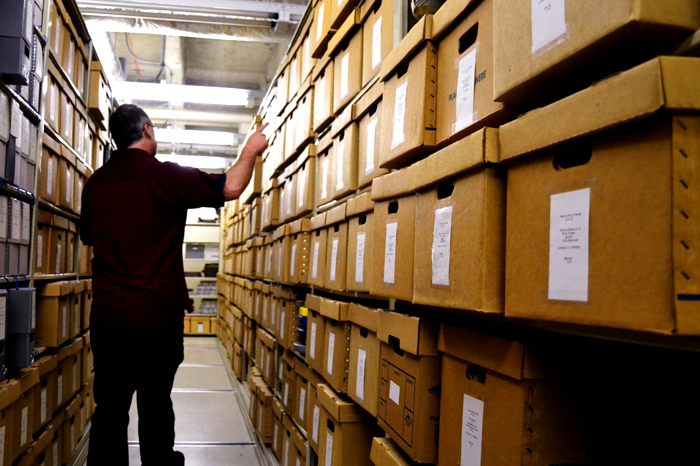MASC preserves campus history
September 27, 2013
While history may be in the past, the Manuscripts, Archives and Special Collections department (MASC) works to keep it a part of our future.
MASC became the university’s record keeper starting in 1959 in the Terrell Library with one archivist, Mary Avery.
Department Head Trevor Bond came up with the idea for the current exhibit based on the common reading book “Being Wrong” by Kathryn Schulz, said Steve Bingo, a processing archivist. The exhibit features multiple mistakes made throughout history and includes features on misconceptions about gravity, animals and maps.
Other faculty members who create exhibits and collections include: Greg Matthews, cataloguer; Cheryl Gunselman, manuscripts librarian; and Mark O’English, university art director.
“Trevor, Cheryl and I had ideas in mind already, while Mark and Greg worked on broader themes, wanting to use our collection of books with various illustrations,” Bingo said. “I did the gravity section, It Shall Be Done, because I was into the map of Spokane and regional history, and I like the idea that successful ideas, like the Coulee Dam, come from multiple failures first.”
People can request exhibits, and the department will create them. Exhibits might change as often as every two to three months, or they could change two to three times a semester, Bingo said.
Besides working on exhibits, Bingo also puts together collections. Collections can be based on a specific person or culture. Bingo recalled one submission of sweatpants from a Japanese internment camp that contributed to the Japanese-American collection.
“What I love about my job is that a submission can vary from a pair of sweatpants to a postcard,” Bingo said.
The main focuses of the collections are university and regional history. Anybody can submit artifacts to a collection, but it doesn’t necessarily mean they will be accepted. Most of the items the university receives are donations.
“A collection must be processed, categorized and that could take as little as one to eight hours, sometimes preservation work needs to be done too,” Bingo said. “A collection can range from one item to something as large as the Tom Foley Congressional section, which is the largest at 550 linear feet.”
MASC is currently working on digitizing film and paper copies of Washington State University photos. O’English is heading up those projects.
“The idea to digitize football programs followed close on the heels of digitizing all the yearbooks,” O’English said. “The oldest program we have is from 1906.”
The items are scanned in with a Zeutschel scanner, an 8-foot tall machine with a glass tabletop 3 feet by 4 feet. It took three years to fundraise for the $125,000 machine, and it takes about 30 seconds to scan and then the file is converted to a PDF. A full year worth of material takes about 25-30 hours to scan, O’English said.
“We have done projects when people ask, like a researcher in Toronto found these old Native American newspapers that we didn’t even know we were in possession of, and because they were unique we scanned them,” O’English said.
Students can view all the projects online, including the Washington State versus Idaho Vandals homecoming series on the Facebook page fb.com/wsumasc.





















